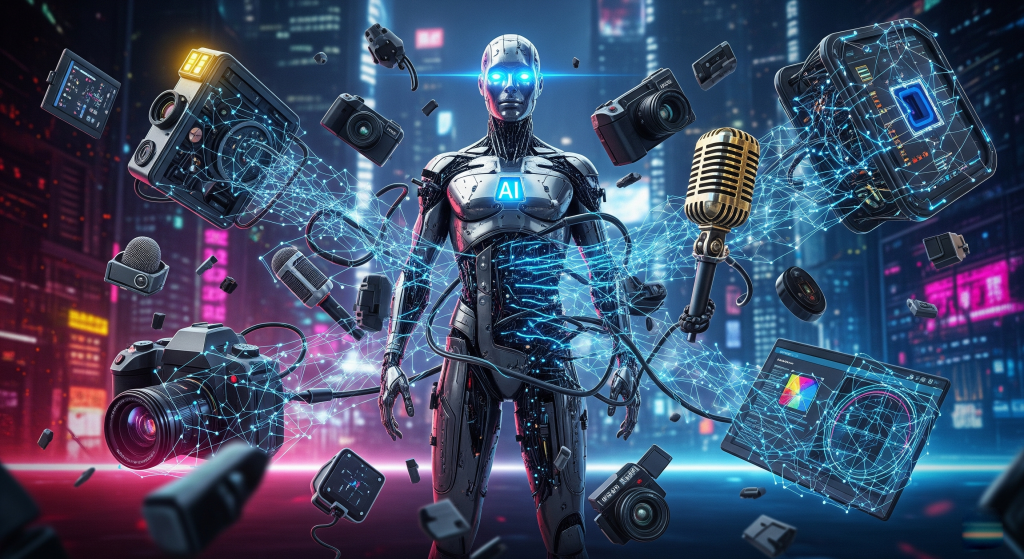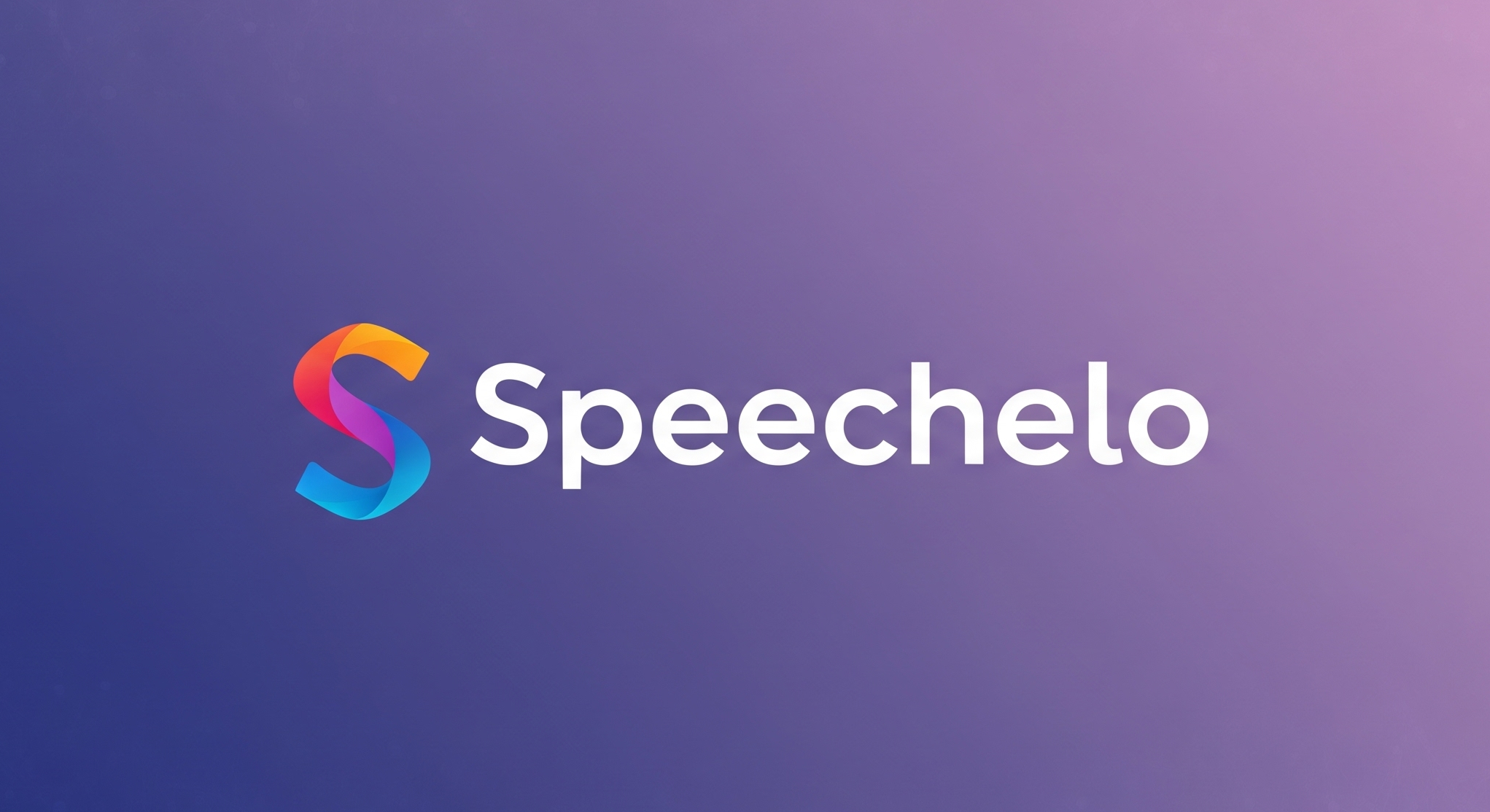
Introduction: The AI Takeover in Creative Industries
The creative world is undergoing a seismic shift, and artificial intelligence (AI) is at the helm. From generating lifelike videos to composing original music and designing stunning graphics, AI-powered tools are transforming how content is made—democratizing creativity while raising questions about the future of human artists.
AI is offering unprecedented efficiency, personalization, and automation, and as it continues to evolve, what does this mean for professionals in video production, graphic design, and audio engineering?
In this deep dive, we’ll explore:
- How AI is reshaping video creation (with tools like VideoExpress & VidToon)
- The rise of AI-generated voiceovers (Speechlo & beyond)
- AI-powered design (Adobe Firefly, Canva, and more)
- The future of human-AI collaboration in creative industries
- Ethical concerns and the balance between automation and artistry
AI in Video Production: From Editing to Full-Generated Content
The Rise of AI Video Tools
Gone are the days when video production required expensive equipment, weeks of editing, and specialized skills. AI-powered platforms like VideoExpress and VidToon now enable anyone—from small businesses to influencers—to create professional-quality videos in minutes.
- VideoExpress: This tool uses AI to automate video editing, suggesting cuts, transitions, and even background music based on the content’s tone.
- VidToon: Specializing in animated explainer videos, VidToon’s AI simplifies character animation, lip-syncing, and scene transitions, making animation accessible to non-artists.
AI-Generated Deepfakes & Synthetic Media
AI doesn’t just assist—it can create. Deepfake technology (like Synthesia and D-ID) allows businesses to generate hyper-realistic virtual presenters, eliminating the need for actors. While controversial, this tech is being used in marketing, e-learning, and even filmmaking.
The Future of AI in Video
- Real-time AI video enhancement (upscaling, color correction, stabilization)
- Fully AI-scripted and generated short films (experiments like OpenAI’s Sora)
- Personalized video ads (AI tailoring content to individual viewers)
AI in Audio: Voice Cloning, Music Composition & Beyond
AI Voiceovers & Text-to-Speech Revolution
Tools like Speechlo and Murf.ai provide studio-quality voiceovers in multiple languages and accents, eliminating the need for human voice actors in many cases.
- Speechlo: Specializes in natural-sounding AI voices for commercials, audiobooks, and YouTube content.
- Adobe Podcast AI: Enhances audio recordings by removing background noise and improving clarity automatically.
AI-Generated Music & Sound Design
Platforms like Boomy and AIVA allow users to generate royalty-free music by simply selecting a genre and mood. Even big players like Sony and Warner Music are experimenting with AI-composed tracks.
The Future of AI in Audio
- AI mastering & mixing (LANDR already offers AI-powered mastering)
- Personalized soundtracks (AI adapting music in real-time for games & videos)
- Voice cloning for dubbing & audiobooks (ethical concerns remain)
AI in Graphic Design: From Automation to Generative Art
AI-Powered Design Tools
Adobe’s Firefly, Canva’s Magic Design, and DALL·E 3 are making graphic design faster and more intuitive.
- Adobe Firefly: Generates images, vectors, and textures from text prompts.
- Canva AI: Automates layout suggestions and even creates designs from scratch.
- MidJourney & Stable Diffusion: Produce stunning digital art in seconds.
The Impact on Human Designers
While AI speeds up workflows, it also raises concerns about originality and job displacement. However, many designers now use AI as a collaborator—generating concepts that they refine.
The Future of AI in Graphics
- AI-assisted branding (automated logo & style guide generation)
- 3D modeling via AI (NVIDIA’s AI tools are already doing this)
- AR/VR design automation (AI creating immersive environments)
The Human Factor: Will AI Replace Creatives?
The Pros of AI in Creative Industries
✅ Democratization – Small creators can now compete with big studios.
✅ Efficiency – Faster editing, designing, and production.
✅ Cost Reduction – No need for large teams for basic tasks.
The Cons & Ethical Concerns
❌ Job Displacement – Will AI replace voice actors, editors, and designers?
❌ Copyright Issues – Who owns AI-generated art or music?
❌ Loss of Authenticity – Will human creativity become obsolete?
The Hybrid Future: AI as a Collaborator
The most likely scenario is human-AI collaboration, where:
- Creatives use AI for brainstorming & rough drafts
- Professionals focus on high-level strategy & emotional storytelling
- New jobs emerge (AI trainers, hybrid artists, ethics consultants)
What’s Next? Predictions for AI in Creative Fields
🔮 By 2030:
- AI may write, direct, and edit short films.
- Virtual influencers (AI-generated) could outnumber human ones.
- AI could win a Grammy or Oscar in a “Best AI-Assisted Work” category.
Final Thoughts: Embrace or Resist?
AI is not just a tool—it’s a paradigm shift. Platforms like VideoExpress, VidToon, Speechlo, Adobe Creative Cloud, and Preply (for AI-powered learning) are just the beginning.
The key for creatives? Adapt. Those who learn to harness AI will thrive, while those who resist may get left behind. The future isn’t about AI vs. humans—it’s about AI and humans working together to push creativity further than ever before.
What do you think? Will AI elevate creativity or replace it? Let’s discuss in the comments!

